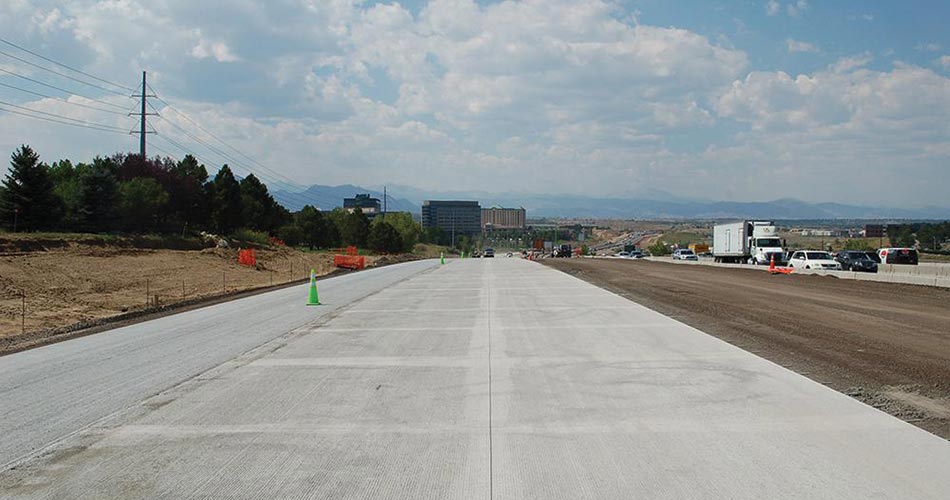What is Rigid Pavement
Rigid pavement is a type of road construction that utilizes a rigid layer as its primary structural component. Unlike flexible pavement, which is made up of multiple layers of asphalt materials, rigid pavements consists of a rigid layer made of reinforced concrete or cement concrete. This type of pavement offers numerous advantages, including durability, strength, and resistance to heavy traffic loads. In this article, we will explore the characteristics, construction process, benefits, and applications of rigid pavement.
Rigid pavement refers to a type of road surface that consists of a solid layer of concrete. It is commonly used for highways, airports, and other high-traffic areas due to its ability to withstand heavy loads and provide a durable driving surface.
The rigid nature of the pavement distributes the load from vehicles more efficiently, reducing the stress on the underlying layers and increasing the overall lifespan of the road.
Characteristics of Rigid Pavement
It possesses several key characteristics that distinguish other types of road pavements. Further, Its behavior in certain soil conditions and applications have made more wide use.
- Strength and Durability
One of the primary advantages of rigid pavement is its exceptional strength and durability.
The concrete layer used in its construction is designed to withstand heavy loads, making it suitable for areas with high traffic volumes.
Rigid pavements can endure the continuous stress exerted by vehicles without significant deformation or damage, resulting in a longer lifespan compared to flexible pavement.
Unlike the flexible pavement, there is minimal change in the properties the surface of the road and the running conditions.
- Joint Spacing
Rigid pavement includes joints at regular intervals to prevent the occurrence of cracks due to shrinkage and temperature changes. We provide the expansion joints and movement joints for this purpose.
These joints allow for controlled expansion and contraction of the concrete slab, minimizing the potential for cracks and ensuring the pavement remains structurally sound.
However, those joints would develop discomfort if they are not properly constructed with the standard construction practices. Further, there are high possibilities of damaging the edge of those joints with the time.
- Load Distribution
Rigid pavement efficiently distributes the load from vehicles over a larger area, reducing the stress on the subgrade and preventing premature failure.
This characteristic makes it highly suitable for supporting heavy traffic and loads, such as those encountered on highways and airport runways.
- Thickness
Rigid pavements are relatively thick compared to flexible pavements. They typically have a minimum thickness of 150mm or more, depending on the expected traffic loads.
However, when they are construction on the ground for low traffic with good soil conditions, the thickness may be lowered as 100mm.
- Reinforcement
It is not mandatory to provide the reinforcement. However, depending on the pavements may be reinforced with steel bars or mesh to further enhance their load-bearing capacity and crack resistance.
Elevated rigid payment constructed on supports such as beams, or any other, will be provided with reinforcement as required by the structural design.
- Noise
Rigid pavements tend to generate more noise from tire-pavement interaction, especially on high-speed roadways.
Surface texturing and other noise mitigation measures may be employed to reduce noise levels.
- Construction Time
Constructing rigid pavements can take longer than flexible pavements due to the time required for concrete curing. Proper curing is crucial for achieving the desired strength and durability.
This bit dependent though it says rigid payment may need more time. Site conditions, ground conditions, ground improvements, etc. faced during the construction of the flexible payments would also cause the delay in the construction.
Construction Process of Rigid Pavement
The construction process involves several stages same as the flexible pavement construction. However, there are some other additional steps as well with the used of concrete as construction material.
- Subgrade Preparation
The subgrade, which refers to the natural soil or existing road surface, is prepared by removing any vegetation, debris, and weak materials.
The subgrade is then compacted to ensure a stable foundation for the pavement.
- Base Course Installation
A layer of granular material, known as the base course, is placed over the subgrade.
This base course provides additional support and helps to distribute the load evenly.
It also improves drainage and prevents the upward movement of water that could potentially damage the pavement.
- Formwork and Reinforcement
Before pouring the concrete, formwork is installed to define the shape and dimensions of the pavement.
Steel reinforcement is also added within the concrete to enhance its strength and control cracking. The reinforcement helps distribute the load across the pavement more efficiently, reducing the risk of failure.
Space for the expansion joint will also be considered when the formwork is made. The spacing of the expansion joint would depends on the project requirements and it would be in the range of 10-20mm.
- Concrete Placement
Once the formwork and reinforcement are in place, the concrete is poured and spread evenly across the designated area after the cleaning the surfaces.
The concrete mixture is carefully designed to meet the required strength and durability specifications. After pouring, the surface is leveled and finished to provide a smooth and even driving surface.
- Curing and Maintenance
Curing of concrete is a mandatory process and After the concrete has been placed, it undergoes a curing process to allow it to gain strength and durability. Curing involves keeping the concrete moist and protected from extreme temperatures for a specified period. Regular maintenance, including crack sealing and joint resealing, is also essential to extend the lifespan of the rigid pavement.
Advantages of Rigid Pavement
Rigid pavement offers several advantages over other types of road construction:
- Longevity
Due to its robust design and ability to withstand heavy loads, rigid pavements have a longer lifespan compared to flexible pavement.
When properly constructed and maintained, rigid pavements can last for several decades, reducing the need for frequent repairs and replacement.
- Load-Bearing Capacity
Rigid pavement is specifically engineered to distribute heavy loads more efficiently. It can withstand the weight of heavy vehicles without significant deformation, ensuring a smooth and safe driving experience even under heavy traffic conditions.
- Low Maintenance
Compared to other pavement types, rigid pavements require relatively low maintenance.
Routine inspections, crack sealing, and joint resealing are necessary to prevent deterioration and extend the pavement’s life.
However, the maintenance requirements are generally less frequent and less costly than those of flexible pavement.
- Reduced Rutting
Rigid pavements are less susceptible to rutting (longitudinal depressions in the road surface) compared to flexible pavements.
This quality is especially important in areas with high truck traffic.
- Resistance to Weathering
Rigid pavements are more resistant to the effects of weathering, such as rain, frost, and temperature fluctuations, which can extend their service life in various climatic conditions.
Applications of Rigid Pavement
Rigid pavement finds widespread applications in various transportation infrastructure projects, including:
- Highways and Expressways
Rigid pavement is extensively used in the construction of highways and expressways due to its ability to handle heavy traffic loads.
The durability and long lifespan make it an ideal choice for these high-traffic corridors.
- Airports
Airports, especially runways, require a pavement type that can withstand the weight of large aircraft and repetitive takeoffs and landings.
Rigid pavement provides the necessary strength and load-bearing capacity to accommodate such conditions, making it suitable for airport construction.
- Industrial Facilities
Rigid pavement is also employed in industrial facilities where heavy machinery and equipment are frequently used.
The pavement’s ability to withstand the constant load and wear ensures a smooth and safe operation within these environments.
Rigid pavement, characterized by its reinforced concrete structure, offers numerous benefits such as durability, strength, and resistance to heavy loads.
Its ability to distribute loads efficiently and withstand traffic stress makes it a preferred choice for highways, airports, and industrial areas. By understanding the construction process, advantages, and applications of rigid pavement, we can appreciate its significance in providing long-lasting and reliable road infrastructure.
FAQs
Q1. Are rigid pavements more expensive to construct compared to flexible pavement?
Rigid pavement generally has a higher initial construction cost compared to flexible pavement. However, its longer lifespan and lower maintenance requirements can make it a cost-effective choice in the long run.
Q2. How long do rigid pavements last?
When properly constructed and maintained, they can last for several decades. The exact lifespan depends on factors such as traffic volume, climate conditions, and maintenance practices.
Q3. Can rigid pavement be repaired if it develops cracks?
Yes, cracks in rigid pavements can be repaired using various techniques such as crack sealing and joint resealing. These maintenance activities help prevent further deterioration and extend the pavement’s life.
Q4. Are there any limitations to the use of rigid pavement?
While rigid pavement offers numerous advantages, it may not be suitable for all applications. Its rigid nature makes it less adaptable to ground movement and can lead to cracking in areas with significant temperature fluctuations or soil instability.
Q5. What is the recommended maintenance for rigid pavement?
Routine inspections, crack sealing, and joint resealing are essential for maintaining rigid pavement. Regular inspections help identify any signs of deterioration or damage early on, allowing for timely repairs. Crack sealing involves filling and sealing cracks in the pavement to prevent water infiltration and further deterioration. Joint resealing involves resealing the joints between concrete slabs to maintain their integrity and prevent the formation of cracks.
Q6. How does rigid pavement compare to flexible pavement in terms of construction time?
The construction of rigid pavements generally takes longer compared to flexible pavement. The curing time required for concrete to gain sufficient strength adds to the overall construction duration. In contrast, flexible pavement can be constructed more quickly as it does not require the same curing time.
Q7. Are rigid pavements suitable for areas with extreme weather conditions?
Rigid pavements can be designed and constructed to withstand extreme weather conditions, but it may require additional measures to accommodate temperature fluctuations and prevent cracking. Proper joint spacing, control of concrete mixtures, and the use of expansion joints can help mitigate the impact of temperature changes on rigid pavements.
Q8. Can rigid pavement be resurfaced or overlaid?
In some cases, rigid pavement can be resurfaced or overlaid to extend its service life. This process involves placing a new layer of concrete or asphalt over the existing pavement. However, the feasibility of resurfacing depends on the condition of the underlying pavement and the extent of deterioration.
Q9. Are there any environmental considerations associated with rigid pavement?
The construction typically requires the use of concrete, which has a significant environmental footprint due to the extraction and production of cement. However, the long lifespan and durability of rigid pavement can help minimize the need for frequent reconstruction, reducing overall environmental impact in the long run.
Q10. Can rigid pavement be used for residential driveways?
Rigid pavement can be used for residential driveways, especially in areas with heavy vehicle traffic or when durability is a primary concern. However, it is important to consider the specific requirements and conditions of the driveway, as well as the budget, before deciding on the pavement type.




